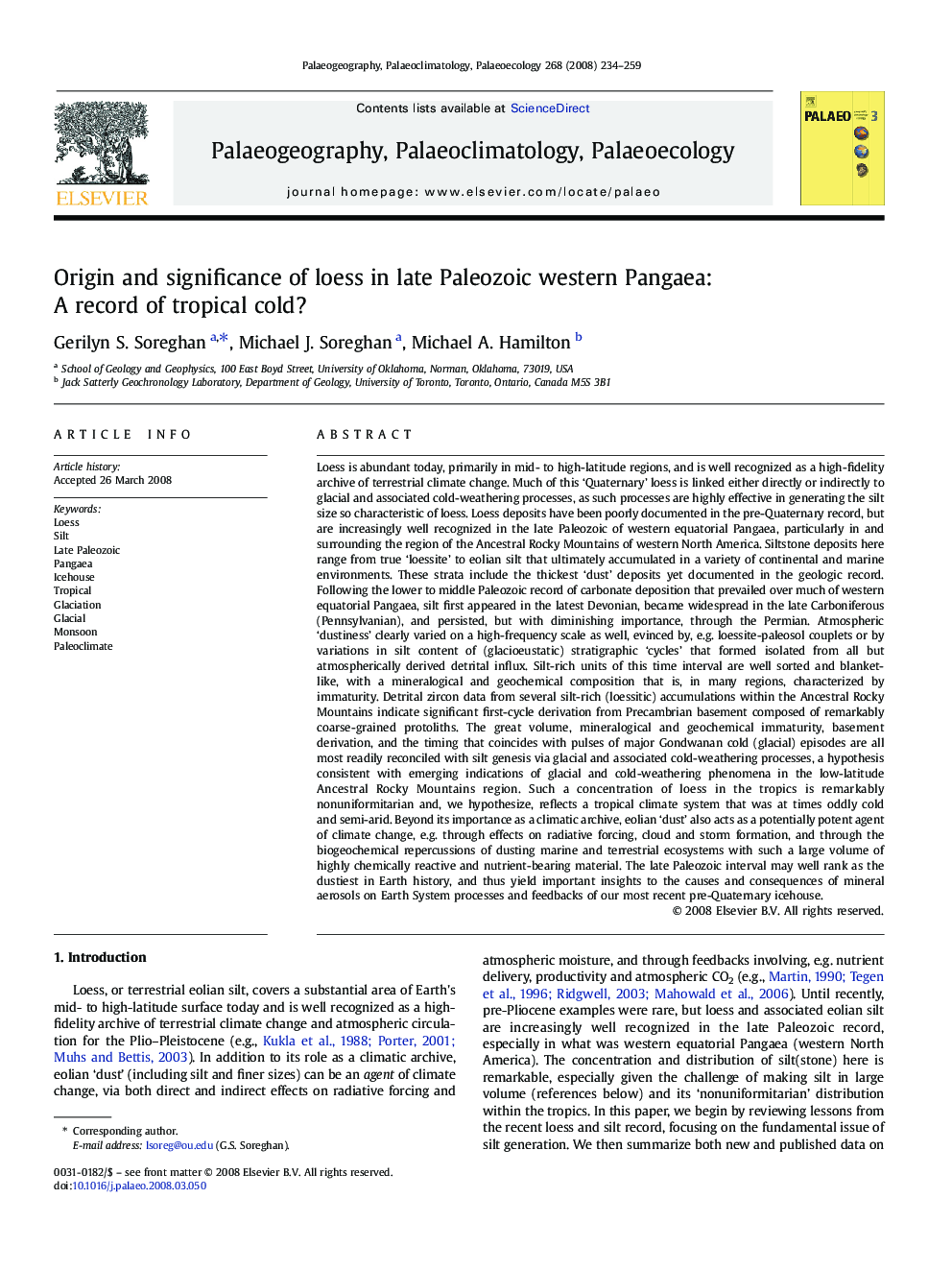| کد مقاله | کد نشریه | سال انتشار | مقاله انگلیسی | نسخه تمام متن |
|---|---|---|---|---|
| 4468355 | 1622317 | 2008 | 26 صفحه PDF | دانلود رایگان |

Loess is abundant today, primarily in mid- to high-latitude regions, and is well recognized as a high-fidelity archive of terrestrial climate change. Much of this ‘Quaternary’ loess is linked either directly or indirectly to glacial and associated cold-weathering processes, as such processes are highly effective in generating the silt size so characteristic of loess. Loess deposits have been poorly documented in the pre-Quaternary record, but are increasingly well recognized in the late Paleozoic of western equatorial Pangaea, particularly in and surrounding the region of the Ancestral Rocky Mountains of western North America. Siltstone deposits here range from true ‘loessite’ to eolian silt that ultimately accumulated in a variety of continental and marine environments. These strata include the thickest ‘dust’ deposits yet documented in the geologic record. Following the lower to middle Paleozoic record of carbonate deposition that prevailed over much of western equatorial Pangaea, silt first appeared in the latest Devonian, became widespread in the late Carboniferous (Pennsylvanian), and persisted, but with diminishing importance, through the Permian. Atmospheric ‘dustiness’ clearly varied on a high-frequency scale as well, evinced by, e.g. loessite-paleosol couplets or by variations in silt content of (glacioeustatic) stratigraphic ‘cycles’ that formed isolated from all but atmospherically derived detrital influx. Silt-rich units of this time interval are well sorted and blanket-like, with a mineralogical and geochemical composition that is, in many regions, characterized by immaturity. Detrital zircon data from several silt-rich (loessitic) accumulations within the Ancestral Rocky Mountains indicate significant first-cycle derivation from Precambrian basement composed of remarkably coarse-grained protoliths. The great volume, mineralogical and geochemical immaturity, basement derivation, and the timing that coincides with pulses of major Gondwanan cold (glacial) episodes are all most readily reconciled with silt genesis via glacial and associated cold-weathering processes, a hypothesis consistent with emerging indications of glacial and cold-weathering phenomena in the low-latitude Ancestral Rocky Mountains region. Such a concentration of loess in the tropics is remarkably nonuniformitarian and, we hypothesize, reflects a tropical climate system that was at times oddly cold and semi-arid. Beyond its importance as a climatic archive, eolian ‘dust’ also acts as a potentially potent agent of climate change, e.g. through effects on radiative forcing, cloud and storm formation, and through the biogeochemical repercussions of dusting marine and terrestrial ecosystems with such a large volume of highly chemically reactive and nutrient-bearing material. The late Paleozoic interval may well rank as the dustiest in Earth history, and thus yield important insights to the causes and consequences of mineral aerosols on Earth System processes and feedbacks of our most recent pre-Quaternary icehouse.
Journal: Palaeogeography, Palaeoclimatology, Palaeoecology - Volume 268, Issues 3–4, 24 October 2008, Pages 234–259